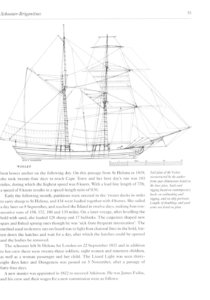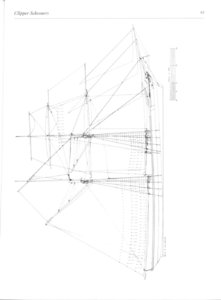- Joined
- Jul 9, 2019
- Messages
- 497
- Points
- 323

Alright, ladies and gents,
I am about to run the braces on my Black Prince Schooner, and I have a question.
I'm venturing off-kit on my rigging, and I have followed Marquardt (The Global Schooner, 1695-1845) in rigging a schooner stay to free the movement of the fore gaff. This stay runs from the mainmast top horizontally to the foremast and down to the deck
Now, for the braces, I understand that the standard way of rigging fore course braces would be to secure the standing end of the braces partway down the mainstay, then running the lead through the brace block pendant on the yard, back to a block at the mainmast top, and finally down to belay at the rail.
My question is, with the schooner stay high up and nearly horizontal, would the braces still be seized to that stay. If so, the lead would be coming from on high, vertically down to meet the pendant blocks, so I am considering securing the standing end to the crosstrees.
I can't seem to find anything in Marquardt or Lees on where this standing end would secure, and would love some advice.
Cheers!
I am about to run the braces on my Black Prince Schooner, and I have a question.
I'm venturing off-kit on my rigging, and I have followed Marquardt (The Global Schooner, 1695-1845) in rigging a schooner stay to free the movement of the fore gaff. This stay runs from the mainmast top horizontally to the foremast and down to the deck
Now, for the braces, I understand that the standard way of rigging fore course braces would be to secure the standing end of the braces partway down the mainstay, then running the lead through the brace block pendant on the yard, back to a block at the mainmast top, and finally down to belay at the rail.
My question is, with the schooner stay high up and nearly horizontal, would the braces still be seized to that stay. If so, the lead would be coming from on high, vertically down to meet the pendant blocks, so I am considering securing the standing end to the crosstrees.
I can't seem to find anything in Marquardt or Lees on where this standing end would secure, and would love some advice.
Cheers!
Last edited:






